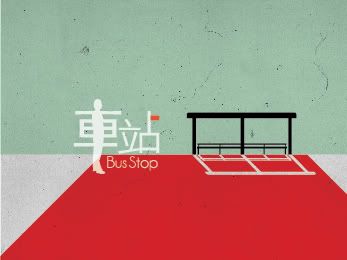2009年12月16日
超大的铁箱也是艺术
最近到了伦敦一游。
闷在新加坡太久会变成井底蛙的,所以决定到国外去看世界。
伦敦有很多世界级的博物馆,展出或收藏物品的量和广度大得让人目不暇给。不管是现代艺术品,古典画作,古董,科学发明,自然科学,历史文物都可以在伦敦的博物馆里找得到。最重要的是,大部分的展览都是免费的,不花钱就可参观。
去伦敦之前,朋友就说在伦敦的博物馆里呆上十天也不一定看的完。当下觉得她也太夸张了。可是当我真正到了那里参观的时候,朋友的话应验了。花了一整个早上,结果只参观完维多利亚与阿尔伯特博物馆(Victoria and Albert Museum)的一楼而已。实在有太多的展出品值得去观赏,去研究了。
出名的博物馆包括国家画作展览馆(National Gallery),泰特古典艺术博物馆(Tate Britain),泰特现代艺术博物馆(Tate Modern),自然史博物馆(Natural History Museum)。其中让我印象与体验最深的,是 Tate Modern 里的其中一件互动艺术品。
这件艺术品从外观看起来真的很不像艺术品。基本上,他就是一个很大很大的货柜箱(以下照片)。当你站在箱子的入口处,可以看见是黑暗的,没有灯,只有少许的光线从外面投射进货柜箱里,内侧的四面墙也是黑的。眼前的画面,就是一个使人觉得有压迫感的大黑洞,等着你进去探险。
和朋友进去的时候,因为不知道里面有些什么,也看不见任何的东西,我们有些许由于,脚步非常缓慢。我甚至觉得有少许的害怕。可是走着走着,我们竟然到了空间的尽头。里面什么都没有。
原来,这个货柜箱就真的是一个空有暗的货柜箱。
我当时第一个反应:这展览品也太笨了吧!为了看设计这艺术品的艺术家怎么把这么笨的东西解释成艺术,我就去看说明的看板(以下照片)。我所看到的说明,出人意表得给了我灵感,启发和难忘的体验。
"How shall I move forward?" you might ask yourself, as you stand at the threshold, confronted by the darkness ahead. The unknown can be terrifying, especially if it is also without light. How you approach it is unique, as your first encounter with anything can only ever be as an individual. Staring ahead into the black void may make you wonder whether to move ahead at all.
'Its fine', you reassure yourself, "what can actually be inside?" How It Is is complete only when you, the viewer, enter. The container focuses you inwards, both physically and psychologically, deeper into the darkness. In choosing how to move ahead- to march in fearlessly, or to kirt along the walls - you create your won journey. But as you bump into others, or mistakenly grab a stranger's shoulder, your trepidation eases and collectively you navigate the void..
说明看板上所说的感觉,行动,思绪我在货柜箱里面都体验到了。顿时间,我对展览品的嘲笑变成了敬佩。这么简单的一件物品/空间,却带出了人内心的复杂情绪和外在行动的可能性。
再说,这些体会不会只停留在货柜箱里面的空间,可以延伸至日常生活。当我们碰到难题的时候,和在走入黑箱那一刻的反应是一样的。当我们面对看不到前景的未来,或算不到后果的抉择,在货柜空间里的反应也会出现。
想到这里,不得不为刚开始的那种无知的判断感到惭愧,也非常庆幸我去看了说明看板。如果没有参考,我可能永远都会是天真的愚人。
后来,我也发现,这个体验只会有一次。之后如果你在尝试进去的时候,你没有办法再找回同样的体验了。你已经熟悉那个空间了。也许人生也是如此吧。生活中的每一个经历,只会有一次。下一次,不管情况多么雷同,也已经不一样了。
最深层的意义,往往来自最简单的东西。
最简单的东西,也往往能拉近艺术与生活的关系。

第十一堂biomechanics课(最后一堂)
上个星期我们上了最后一堂biomechanics课!我们把这十一个星期所学到的种种知识和训练总结起来。开始做dactyl之前,李邪提醒我们全身上下的线条:
Last Saturday was our last lesson for Biomechanics class!
Although we still have much more to learn (in deepening our knowledge and skills in Biomechanics), this lesson has helped us sum up all that we have learnt in these 11 weeks.
As we started the day with dactyl, Lixie reminded us of the different lines in our body. In this way, we can adjust and align our own body such that it is three-dimensional:
a) 头到天花板 from head to the ceiling (pulling upwards)
b) 背到后方 from the back (pulling backwards)
c) 胸口出去 from the chest (pulling forward)
d) 肩膀两条横的线 from the shoulders (horizontally outwards)
e) 膝盖(稍弯,不要锁起来)from the knees (knees slightly bent instead of being locked)
f) 脚板到地上 from the soles of your feet to the ground (downwards)
g) 骨盆 from pelvic
这是在空间走动,寻找新的tochika时的小提醒:
1. 行动虽然是有自觉性的,但不要刻意(让otkaz自然-不需要刻意去bounce过后,才找新的tochika)
2. 要有Dynamism,台上的动作才能“看”. 想像走路是胸前有一盏spotlight,照亮前面走的路。之后,想像背后也有一盏spotlight。走的时侯,应该有一种在切入空间的感觉。
We then walked in the space, finding a new tochika as we stop. Some notes here!
1. movement is conscious but not deliberate (e.g. keep otkaz natural-need not bounce on purpose before moving off to the new tochika)
2. Dynamism is VERY important in order to make our movements watchable on stage. A way to exercise this dynamism is to imagine that there is a spotlight in place of the line pulling forward from the chest. This spotlight shines in the direction of the new tochika as you walk. Next, the back also has a spotlight. And we own the space because we have this 2 spotlights.
如果是荒谬剧或是抽象剧,我们该怎么走呢?以下有一些关于biomechanics的误解和正解:
- biomechanics 不在于对抗自然主义
- 动作不要每次都那么大
- 刚开始,因为工业社会的关系,人的身体变得像机器,所以biomechanics专注于发现身体的“功能”。但这不是对biomechanics唯一的理解。
- 只要保留biomechanics的原则,它可以在任何不同的剧使用(注:千万不要把它当成一种style)
- etude夸张的动作,重点在于训练演员的身体
Continuing to walk in the space, we were told to sense the difference in our movements as we apply it to different forms (e.g. naturalistic play, absurd piece, abstract play). some notes here:
- biomechanics is not against naturalism
- movements need not always be large
- the initial understanding of biomechanics involves exploring the usability of human body (due to influence of industrialization, resulting in human behaving like "machines") but it is not the ONLY understanding
- as long as the principle of biomechanics holds, it can be applied to all kinds of play (note:do not make it like a style)
- etude movements are exaggerated in order to train actors
之后,我们学了slap etude最后的部分:散步。第一个打人的同伴将把对方的手带到自己身边(不要用力拉),同时对方也自动地站进来到同伴的身边. 双方要有共同的节奏,一起走,一起停下来。当大家呈现etude时,我们都“考试”不及格!以下有些原因/小提醒。
Proceeding to etude, we finally learnt the last part of the slap etude: the walk
The first person to slap will bring the partner's arm to herself/himself (NOT pull!). The pair will go for a walk together before coming to a stop with mutual consensus. There is a mutual rhythm between partners. The otkaz is important here in giving your partner where you are going.
We then took our "exam" and each pair presented their etude. Unfortunately, we all FAILED !
let's first look at some notes taken as we presented the slap!
- every movement should be calculated
- body control (grouping of stomach muscles)
- Lack of Dynamism (one of the MOST IMPT factor. Dynamism helps to trigger imagination for the audience. It gives meaning to the movements. We cannot be to "mild" when doing etude because this lack of energy does not create the dramatic tension. akhl also mentioned that the power/OMPH is what we need and lacked then)
- during the preparation command, the impulse/tension has to be held. stillness is important to prepare for the dynamic slap
- lines of the body went missing (being precise is very important!)
- note the storyline and rhythm of the entire slap etude. (not a movement piece!)
- different etudes have different levels of difficulty but on the whole, it is all about controlling the body.
第二部分李邪让我们了解biomechanics在以下不同地方的运用:
The 2nd part of the lesson we learnt the application of biomechanics:
1。肢体的biomechanics(body-As in a music score, there is rhythm and a physical score the things we do in biomechanics)
2。空间的biomechanics (space-this space/playground can include the set, object, blocking) and geometry
3。演员之间的biomechanics(between actors-we give each other signals in deciding when to walk together and when to stop together.)
*All (1), (2) and (3) has scores that are being composed.
4。剧本的biomechanics (in the script-the script's Tochika refers to the objective or perspective taken by the playwright/director/actors/character. the playwright and the director can discuss can perhaps deconstruct the play in exploring its objective. the actors have to accommodate to the character's tochika in the play. The tochika also gives show a style.
otkaz is to prepare for the posil of the script, followed by a stoica. tomoz refers to a change/twist in the play, a change in rhythm or even a break.)
5。人物的biomechanics (in the character-character's otkaz refers to his/her background info and it often explains how the character prepares for something. (e.g. The queen in snow white and the seven dwarfs wants to be the fairest person on earth, hence she buys a mirror that tell her lies) Again posil refers to the action being carried by the character. its stoica can be an ending, consequence or realization. tomoz is what changes her objectives such as obstacles encountered.)
6。行动线的biomechanics (action-similar to (5), there is always this cycle of tochika, otkaz, posil, stoica and tormoz in every action.)
7。台词的biomechanics (specific line)
最后,我们以《废人》中的两个monologues为基础,把剧本分成小段落。在了解空间的同时,每个段落得配上一个画面来代表情景。下一堂课我们希望能再次呈现,请拭目以待!
We explored 2 monologues of the script Trash
1. we had to break down script into mini episodes (physical scores)
2. understand the playground (space)
3. map it and attach an image to each mini episode
we will be presenting again during the coming saturday lesson before starting on Voice Lesson with Lixie!
Do stay tuned for more !

2009年12月13日
美术,从不会完成
大概年中的时候,达文西展览来到了新加坡。曾经因为《达文西密码》一书对达文西这位名画家产生了好奇,所以和友人参观了这场展览。
许多人都以为达文西只是个画了许多名画的杰出画家。很惭愧的,我也是。可是看完展览之后,我才知道达文西除了是画家,还是雕塑家,数学家,科学家和工程师。他不只画画,还发明了新的油画技术,各种各样实用的原始机械和战争武器。
朋友看完展览之后,称赞达文西:“Da Vinci真的很厉害。他原来会做这么多东西。”是的,大家参观了这个展览都会对他的很多成品叹为观止,尤其因为他生于一个科技完全不发达的年代。可是,鲜为人知,达文西真正令人敬佩的是他的精神。就像很多历史伟人,如俄罗斯现代戏剧大师斯坦尼斯拉夫斯基(Stanislavsky)和德国物理学家爱因斯坦(Einstein)一样,他一生都在观察,研究,探索与实验。如此难得的精神,每次在他画画和发明的过程中都会体现。
在画闻名世界的壁画《最后的晚餐》(The Last Supper)时,达文西为了可以一边画,一边修改这幅壁画,而发明了全新的壁画技术。不只如此,为了能让壁画里的人物能看起来栩栩如生,他花了两年的时间观察生活中人们的身体语言。在画壁画的过程中,他可以一天内不停地画,也可以花好几天不动笔只看着他的画,一直盘算,计划如何继续画。达文西的创作精神真的让我十分敬佩。
到了展览厅的最后,有一个看板汇集了达文西一生所说过的一些名言。其中有一句非常精简和准确,让大家透视了他聪明的脑袋。
"Art is never completed, only abandoned." (美术从不会完成,只会被遗弃)
这句话概述了达文西一生的创作理念与精神,相信也能带给很多人启发和灵感。
我想,表演艺术也是一样吧。不会完成,只会被遗弃。

2009年12月5日
第十堂biomechanics课
上个新期又是一堂有趣的课。艺树人像以往一样,先找个tochika做dactyl开始,然后预算从一个tochika到另一个tochika需要走几步。这让我们锻炼自己的预算能力,好让我们更能够在台上保存精力。能够在台上充满活力真的需要靠功夫才行,尤其是那些演出时间长的戏。在一个小组一起走动是件更困难的是。由于自己会不知觉地倾向他人的步伐,我最终的踏步往往出乎预算。
艺树人接着学了raccouris,一种充满动态的姿态。借着otkaz,posyl和stoica的原则,艺树人各个都得与正方体竖立一个raccouris,每次只能有身体的一个部位接触到正方体。有个清楚的stoica非常重要因为它给人更多时间去预备下一个动作。
艺树人从一个接着一个到整组人一起做raccouris,训练自己的反应和应变能力。艺树人也尝试不同的层次和身体的形状,使整体看起来更有动感。
之后,艺树人分成两组、一组摆个姿势,而另一组得在观察了几秒种后,摆出一样地姿势。这向活动讲究艺树人的精确度的一贯性,尤其是当我们需要重复一样地姿势。
艺树人接着玩了“pass the message”的游戏,但我们传下的不是语言讯息的,而是一个自创的etude。少了一定的精确度,每人传下的etude一个比一个短,也漏了许多细节。艺树人各个的动作除了滑稽之外,有时也显得有点无意义,但大家都大笑了一场。
最后,艺树人练习了“The Slap”,但这次为了让我们把动作做得更尊却,李邪要每人手握着一杯装满水的杯子。艺树人各个都为了平衡手里的那杯水而非常苦恼,动作也自然地慢了下来。起初,大家的动作都有点笨拙,但慢慢地,艺树人各个开始注意自己的每个动作,也比较注重etude里的小细节。课程结素之前,艺树人一样做了几个dactyl。幸好这次李邪只要求我们想像自己手里握着一杯水,而不是来真的!
由于李邪这个星期病了,所以课程也跟着被取消。希望李邪能够尽早康复,陪伴艺树人度过个充实的星期六!
(照片马上就来!)
Last week’s Biomechanics lesson was fun! As always. ARTivate started the day doing our usual dactyl at different tochika. Then we moved on to estimating the number of steps we would take in moving from one tochika to another. This is supposed to hone our estimation/calculation skills so we can better learn how to conserve our energy on stage. Keeping one’s energy level constant throughout the entire duration definitely takes skill and experience. Moving in groups was definitely more challenging. For one, I had the tendency to be influenced by the speed and exact route that the others took hence my estimation went awry at times.
ARTivate then learnt a new term raccouris, which is a dynamic pose. Imagine taking a picture of someone in constant motion - the pose would be one with anticipation of a next move. Using the basic otkaz, posyl and stoica, each ARTivator had to strike araccouris with a cube, one at a time. Our poses were then varied such that we could only contact the cube with a specific part of our body. Giving a clear stoica is very important as it would buy time for us to plan how to leave the cube and generally, our next move.
ARTivate then did this in groups, striking a raccouris one after another and then concurrently, training our reflexes and improvisation at the same time. ARTivators also played with the different levels, shapes and planes of our body to create a more dynamic image.
Next, ARTivate split into two groups - one group strikes a pose and the other must mirror it after a few seconds of observation. This tested ARTivate’s precision and consistency, especially when the group which posed has to replicate the image again.
After that, ARTivate played “pass the message” but instead of an oral message, we had to pass down an etude. Precision was key in this exercise especially when we replicated the actions to the next person. It probably would have been easier if we could tag each action to some story but as the etude gets passed on, many minor details were left out and sometimes, the actions just seems plain senseless but very comical. It was a hilarious way of learning the need to be precise in everything one does.
As the last activity of the day, ARTivate practised “The Slap” etude but this time, each ARTivator had to hold a plastic cup filled to the brim with water as we did the etude. Every action was executed so slowly as each of us struggled to keep the cup perfectly upright. After a few random splashes of water and many awkward moments, ARTivate learnt that slowing down the actions actually made us more aware of how each move is made and more attention could be paid to the details. Everyone started getting more conscious too. We then concluded the day with a few dactyl, while imagining that we were holding on to those cups of water. Lucky us!
There was no lesson this week as Li Xie has, unfortunately, fallen ill. Here’s wishing her a speedy recovery and to another awesome three hours next week! (:
(Photos coming soon!)

艺树人的过往镜头
_______________________________________________________________________
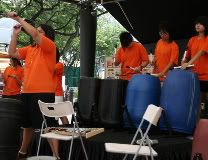
- The FLAMES利用环保乐器所带来的精彩表演
补天计划之《绿吗?》
2008年1月
《绿吗?》是戏剧盒08年以环保为主题的社区演出系列的一部分。
艺术人希望通过此活动,让公众,特别是青少年,对环境有更深的认识,并且更了解自己对环境造成的影响。
《父。女花》
编剧: 林丹凤
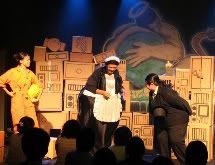
- 艺树人呈献的戏剧小品
创作灵感取自柯思仁《梦树观屋》中一句:
“砍倒一棵树,可以再种。对人类来说,这只是一件微不足道的事”。
剧中描述的是女儿面对父亲酗酒赌钱,因而要她把心爱的花卖掉的抉择。
《塑料杀死猫》
编剧: 何健僮
一个神秘女子为了名利而开始进行实验,培植一种智慧崇高的动物。因为要去远行休息,女子把实验品交给了她的管家照顾。
可是实验出现了无法想象的变化,因而对豪宅与人类的安全造成了威胁。
最终,为了把家中的大害除掉,她和管家与一手创造的动物大动干戈!

- 非一般的小型户外市集
协助编剧:郭庆亮
执导:许慧铃
返回页顶
_______________________________________________________________________
Project Mending Sky: THE GREEN MAN!
January 2008
The Green Man is part of Drama Box’s community project on Environment.
Conceptualized and organized by ARTivate, the event consists of:
- - ARTivate’s thought-provoking plays on environmental conservation
- - “The Flames” musical performance by girls from Andrew & Grace Home
- - A mini bazaar that promotes environmental conservation
Selfish, written by Lam Dan Fong, reveals a story about the decision of a daughter -
to escape into a perfect new world or remain in the world of self destruction.
Plasti-City Kills the Cat written by Ho Kian Tong, explores the harm brought about by plastics to the environment.
The plays are written under the dramaturgy of Kok Heng Leun and directed by Koh Hui Ling.
返回页顶
_______________________________________________________________________
What Matters?
July 2008

What Matters? is a package of one forum theatre play and three fringe activities which explores the issue of race with the youths of today.
Through the series of fringe activities and the Forum Theatre play, ARTivate aims to probe further into the awareness of racial issues with the youths of today and understand the true meaning of harmony between races.
Forum Theatre Play
3 students of different races set up an Adventure Club in school. As they prepare to go on a new adventure to search for fugitive Mas Selamat in their club room, an accident happened in the school and conflicts arose within the group.
*The play is performed mainly in English with some Mandarin and Malay
Fringe #1: Race in School – Stereotypes and Others
The youths were asked to move, play, think and discover, thus finding the way of dealing with racial issues in real life.
Fringe #2: Movie screening – To Kill a Mocking bird
Based on the novel by Harper Lee, this award-winning classic film present racial issues vividly on screen.
There was a discussion session after the screening facilitated by Mr. Danny Yeo.
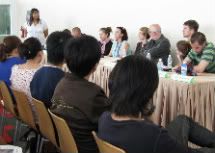
- Sharing by young actors of Class Enemy from Bosnia
Fringe #3: Survival Ethnic Conflicts in Bosnia – a Singapore Arts Festival programme
Sharing by young actors of Class Enemy from Bosnia on their personal experiences of the war-torn times and how they have learnt to cope with growing up in an environment filled with violence caused by racial and ethnic conflicts.
Speaker: Director Haris Pasovic and the cast of CLASS ENEMY (East West Theatre Company)
返回页顶
_______________________________________________________________________
Project Mending Sky: Movie Screening
August 2008
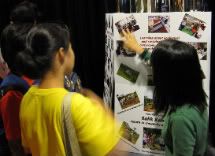
- Learning about the environment
The Movie Screening is the second installment of Project Mending Sky: The Green Man, held in conjunction with Project Mending Sky: ME (补天计划之我).
Through movie screenings and post-movie discussion sessions ARTivate hopes to explore issues surrounding our Earth’s survival amidst the damages we are inflicting on her.
Documentary-Movie #1: Winged Migration
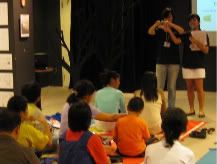
- Teaching the audience how to make dustbins using flyers
Directed by Jacques Perrin, a noted actor and film producer in France, this Academy Award nominated movie records the flight of dozens of different birds from around the globe as they follow their navigational instincts and make the taxing journey to more temperate climates in the fall.
Documentary -Movie #2: The Greening of Cuba
Cuban farmers and scientists working to reinvent a sustainable agriculture based on ecological principles and local knowledge rather than imported agricultural inputs which remind us that developed and developing nations alike can choose a healthier environment and still feed their people.

- The audience sharing
Documentary -Movie #3: The Power of Community
A follow-up to The Greening of Cuba 10 years later to see how the Cuban transitioned from a highly mechanized, industrial agricultural system to one using organic methods of farming and local, urban gardens.
Discussions facilitated by: Mr Danny Yeo and Mr Tay Lai Hock
*Language: English (with English subtitles)
返回页顶
_______________________________________________________________________
《 城S 》
2009年7月

《城S》是艺树人首个以集体创作的方式完成的作品也是艺树人经过一年演员及编剧培训后的首个演出。在集体创作引导者郭庆亮和导演许婉婧的指导下,艺树人尝试了各种即兴表演,经过不断的试验剧本才达到了令人满意的成果。
《城S》以新加坡社会和现今高度融合及环球化的世界作为语境,对城市包容性的概念进行探索。
剧中的故事呈现城市的各个面向并由一系列的行李箱奏鸣曲所串连。行李箱奏鸣曲象征了一个旅程,让大家通过这个旅程反思多数人如何建构与看待社会中的意识形态。
在剧中,转制的体制,不和谐的状况,受歧视,被限制,被异化,被压抑等诸如此类的现实情况将被正视。多数人所作的决定能代表少数人的意见吗?在这场力争上游的竞赛中,精英又是否会考虑到一般老百姓的福利呢?你的言行举动是出自你的本意又或是受到其他人的影响?
艺树人希望观众能够通过观赏此剧重新思考真正具有包容性的城市所蕴含的意义再回答自己这些问题。
由艺树人集体创作和演出, 郭庆亮担任集体创作引导者, 许婉婧(戏剧盒艺术工作伙伴)导演.
*演出主要以中文进行。(提供英文字幕)
返回页顶
_______________________________________________________________________
CityS
July 2009
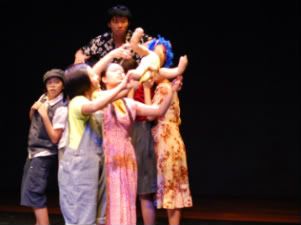 Part of a double-bill during
Part of a double-bill during
Singapore Drama Educators Association (SDEA) Celebrate Drama 2009
“CityS” is ARTivate’s first devised play. It is also ARTivate’s debut presentation following a year-round capacity-building process, during which the ARTivators underwent a series of training involving acting and playwrighting.
It is conceived and brought to satisfactory theatrical fruition by the collaboration of all ARTivators via a gradual process and accumulation of brainstorming and improvisation, under the guidance of devising facilitator Kok Heng Leun and director Koh Wan Ching.
“CityS” explores the concept of an inclusive city, in Singapore’s context, and in the context of our current highly integrated, globalised world.
In this play, stories from different aspects of a city are connected by a series of luggage sonatas which symbolizes a journey that questions the ideology constructed and perceived by majority of the society. Realities are confronted: autocracy, disharmony, discrimination, limitations, alienation, oppression and the likes. Does the decision of the majority always account for the minority? Will the elites ever consider the welfare of their downtown folks in this race to the top? Is that action you took out of free will or under the influence of others?
ARTivate hopes that audiences will reconsider the meaning of a truly inclusive city after watching the play and in turn, answer these questions for themselves.
Devised and performed by
ARTivateDevising facilitated by
Kok Heng Leun Directed by
Koh Wan Ching
*Performed mainly in Mandarin. (English Surtitles provided)
返回页顶
_______________________________________________________________________
《嘘… 审查:论坛剧场演出》
2010年9月

为了提高人们对审查制度的意识并让大家了解审查如何渗透生活,这个演出原本准备使用具象征性的舞台设计并进行现场音乐伴奏,冲破语言和种族的障碍让观众发现审查的力量。演出以5个小品组成,是艺树人经过5个月严密训练创作的结晶。
然而,距离演出仅剩三周的时候,新加坡媒体发展局告知我们户外表演执照不被批准。由于短剧探讨”敏感”课题,当局要求演出必须附上“含有成人议题”的说明并声称只有在室内演出,才能有效地执行说明。
因此,我们最后决定取消原本的演出,重新创作另一出论坛剧场来探讨在重要的课题上保持沉默,或刻意隐瞒实情所带来的诸多问题,而这些问题又如何导致沟通、对话上的断层。
导演:
郭庆亮, 与
艺树人联合创作
现场音乐:
光弧宫
返回页顶
_______________________________________________________________________
shh… censorship: a forum theatre performance
September 2010

This forum theatre performance is a wordless piece that comprises of 5 short pieces. Using a symbolic set design, and featuring live music accompaniment by ARCN TEMPL, this performance hope to transcend language and racial barriers, leading its viewers in discovering the power of censorship, with the aim of creating awareness in the communities about how censorship affects their daily lives.
However, just 3 weeks from our performance, MDA denied us of an outdoor performance license. The authorities gave an advisory for mature content due to the “sensitive nature” of the topics discussed, and claimed that we had to perform indoors in order to administer the advisory.
We stand by our position that the piece should be performed outdoors to reach as diverse a crowd as possible and believe that the issue of censorship should still be addressed. Therefore, we decided to withdraw the original piece from our programme, and replaced it with a new Forum Theatre performance, which discussed the problems of imposing silence and withholding information about important issues.
Devised and performed by ARTivate, this performance is the result of five months of training in Forum Theatre.
Comprising of five short pieces, imploring you to join us in discovering the power of censorship.
Directed by
Kok Heng Leun, co-created with
ARTivate
Live music by
ARCN TEMPL
返回页顶
_______________________________________________________________________
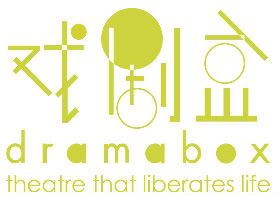
戏剧盒是新加坡最富代表性的现代华语剧团。它也是非盈利的慈善团体。成立于1990年,它凭着关怀社会的人文精神,对公民教育的积极态度,获得了广大观众的肯定。我们的演出除了富娱乐性和趣味性,也常常让观众深思并省思。
Drama Box is Singapore's most prominent contemporary Mandarin theatre company. It is a professional non-profit company with charity status. Formed in 1990, it has since gained a respectable reputation for its acute sensitivity and perception in heightening social awareness and civic responsibility. Our productions remain fun and entertaining, yet thought-provoking and reflective.
戏剧盒omy部落格告诉你戏剧盒的点点滴滴!
白色空间 之 编剧系列
继2001年演员训练工作室《白色空间》后,戏剧盒再度出发为本地中文戏剧界开拓新能量,推出为期18个月的剧本孵化室 --《白色空间之编剧系列》。通过新旧剧本创作者的定期沟通与互动,催生新一波原创剧本,捕捉属于我们时代的脉动。
Blanc Space
The Blanc Space was inaugurated in 2000 to provide a training platform for performers. In 2007, the company expanded Blanc Space to include programmes for budding directors and aspiring playwrights.















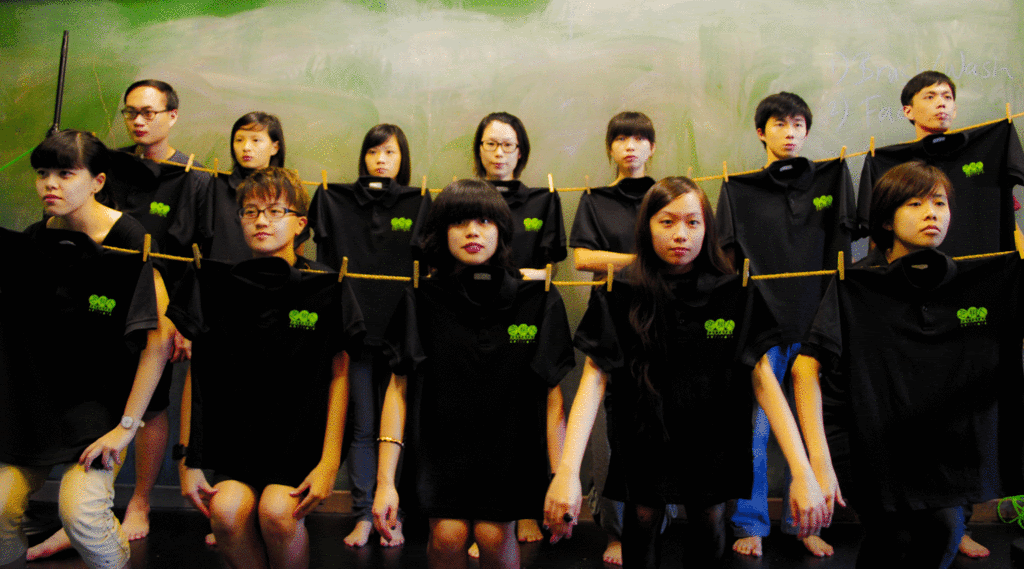
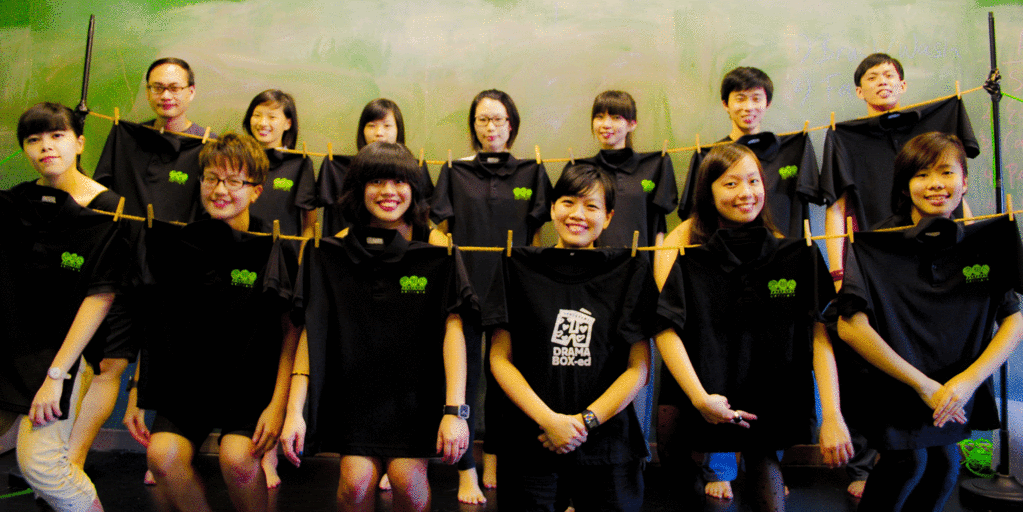
 母性泛滥; 热爱人
母性泛滥; 热爱人 长着翅膀
长着翅膀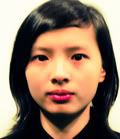 我在南大念心理学科。心理学对我来说,跟戏剧的妙处不相上下。
我在南大念心理学科。心理学对我来说,跟戏剧的妙处不相上下。 就读南洋理工大学。
就读南洋理工大学。 法律系学生。
法律系学生。 正值后青春期的门槛状态。
正值后青春期的门槛状态。 热爱的东西太多,拥有的时间有限。
热爱的东西太多,拥有的时间有限。 在国大读书.
在国大读书. 南大中文系毕业。非常健忘,经常丢三落四。
南大中文系毕业。非常健忘,经常丢三落四。 在2009年毕业于新加坡国立大学的科学系。由于我目前还在学习编剧和导戏的工作,未能有值得一提的代表作。
在2009年毕业于新加坡国立大学的科学系。由于我目前还在学习编剧和导戏的工作,未能有值得一提的代表作。 爱与剧场牵手,与社会学接吻。
爱与剧场牵手,与社会学接吻。 艺树人面试那一天,我告诉许慧铃:"其实我想要做的是电影。"
艺树人面试那一天,我告诉许慧铃:"其实我想要做的是电影。" 











